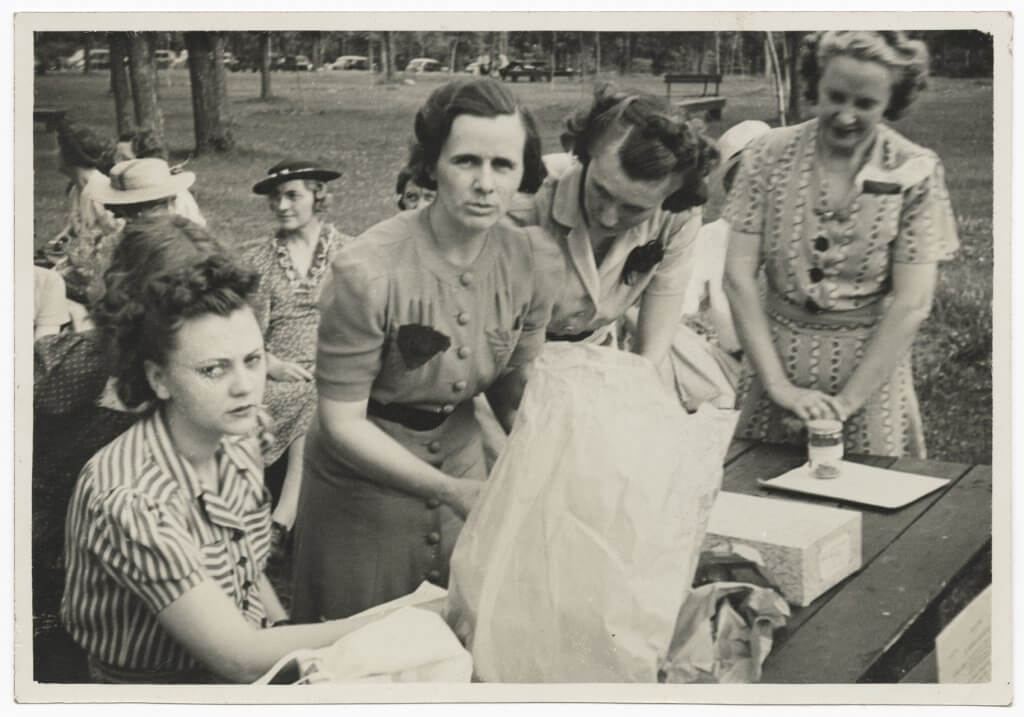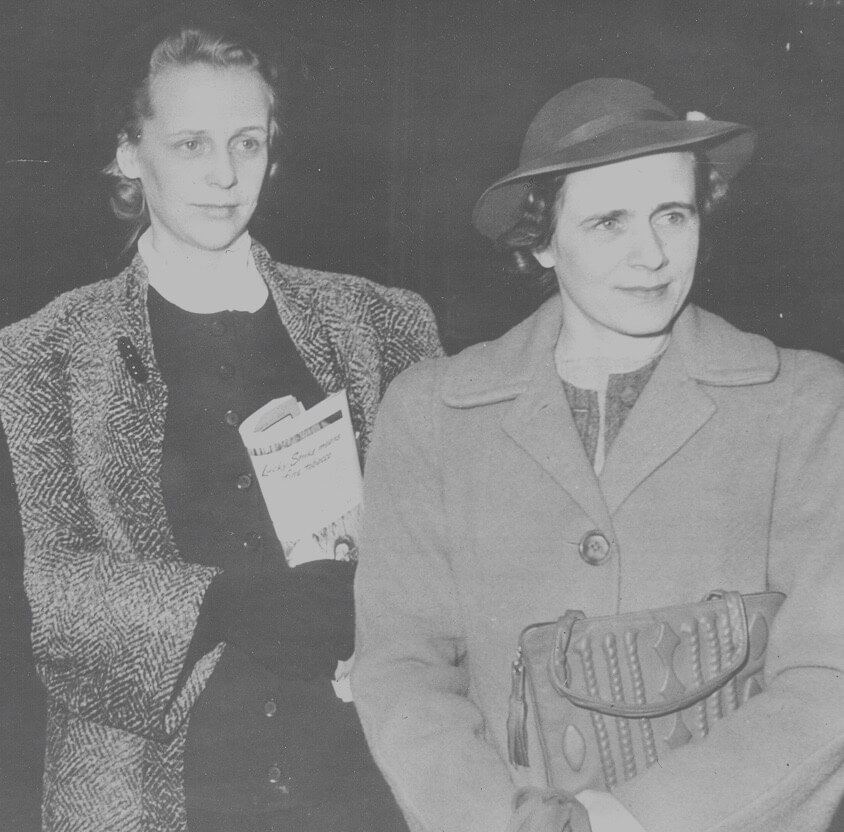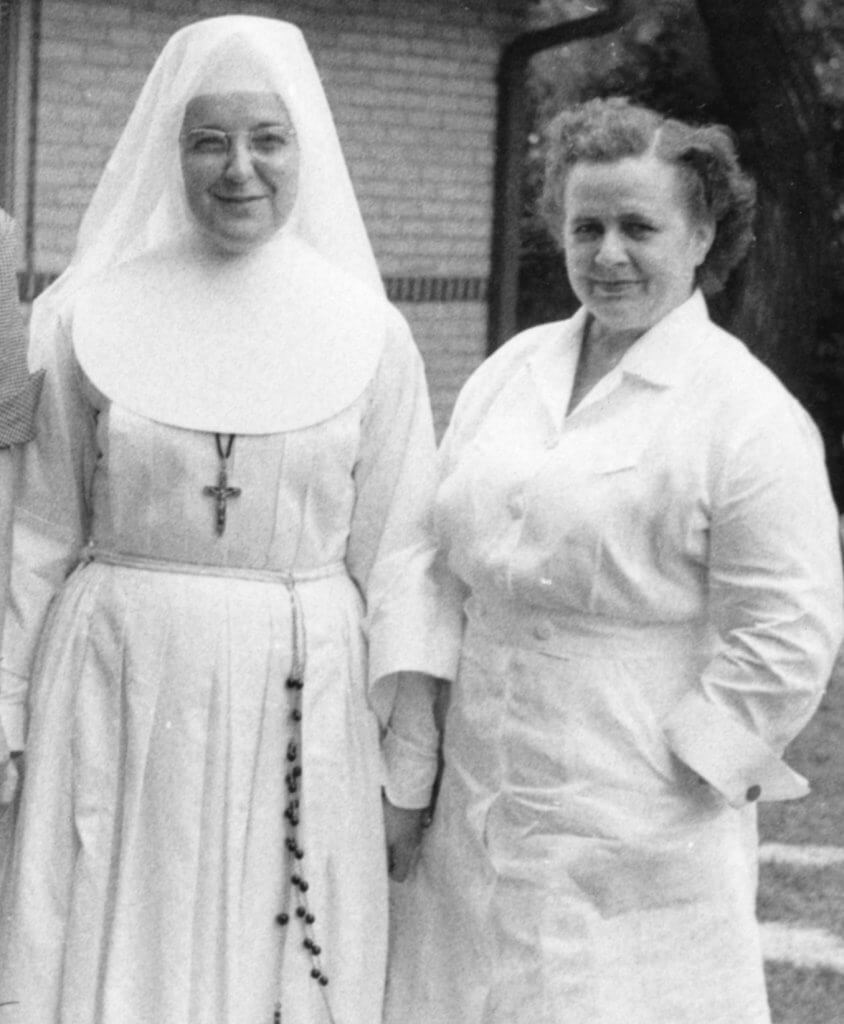Donna Haverty-Stacke recently published The Fierce Life of Grace Holmes Carlson: Catholic, Socialist, Feminist, available from New York University Press. Haverty-Stacke examines Grace Holmes Carlson’s commitment to revolutionary Marxism and Catholicism in her life-long battles against social and economic inequality. Holmes Carlson lived in Minneapolis and faced prosecution under the Smith Act in 1941 but left the Socialist Workers Party in 1952. Randi Storch recently interviewed Haverty-Stacke about the book.

Your book focuses on the life of Grace Holmes Carlson (1906 – 1992) and examines the significance of her experiences as a working-class woman who embraced Catholicism, socialism and feminism at different historical junctures across the twentieth century. How did Catholicism shape her identity and commitment to workers and social justice?
Catholicism shaped Carlson’s identity and commitment to workers and social justice in a variety of ways. Carlson was born in St. Paul, Minnesota into an Irish and German Catholic family. St. Vincent’s, the parish where she worshiped as a child and young adult, was like many Catholic parishes in its charitable works that developed the sense of being “your brother’s keeper.” But it was also a working-class parish located in the Rice Street district of St. Paul whose members welcomed catechumenates from diverse backgrounds (including Chinese and African American converts). This atmosphere most likely informed Carlson’s early understanding of the equality of all people before God and the need to care for others that shaped her sense of social justice as a youngster. The Sisters of St. Joseph of Carondelet who taught Carlson at St. Vincent’s parish school, St. Joseph’s Academy high school, and the College of St. Catherine (CSC) were also a formative influence. They taught Carlson that serving all people without distinction was a gospel mandate.
The Josephites, and parish priests who were trained by Father John Ryan at St. Paul Seminary, also exposed Carlson to the Church’s social teachings on the dignity of work, the legitimacy of workers’ associations, and the need for a just wage to support a decent life for laborers. Among the many texts Carlson read as an undergraduate at CSC was Pope Leo XIII’s 1891 encyclical, Rerum Novarum, which advanced these teachings. She was thus aware of the Church’s arguments for workers’ assertion of their human dignity through the cooperation of labor and capital. These arguments were, however, very different from the revolutionary socialism that Carlson later adopted.

There were other influences in her life that led her to that more radical commitment, including her family’s experience of the 1922 shopmen’s strike (her father was a boilermaker on the Great Northern Railroad) and, of course, her witnessing the 1934 Minneapolis Teamsters’ strikes. But her Catholic faith (particularly her exposure to Catholic social teachings) had ingrained in her a sense of social responsibility, the importance of communal bonds, and a devotion to a cause greater than oneself that gave her, in a complex way, an elective affinity for socialism.
The Catholic doctrine of the Mystical Body of Christ also most likely shaped Carlson’s social consciousness. That doctrine held that, through the Eucharist, Catholics’ union into a spiritual body with Christ as their head was strengthened. It taught that this mystical union with Christ also connected Catholics to one another in the Church and necessitated a duty to act in the world to serve Christ in one another. This doctrine also influenced the Catholic Action movement of the 1930s that called on Catholic lay persons to engage in their faith in the world in socially oriented ways.
When Carlson returned to the Church in 1952, she both lived out and repeatedly called for Catholic lay activism, not only in the many speeches she delivered, but also in the work she did teaching and mentoring students at St. Mary’s Junior College, in her volunteer work, and in the positions she took against the war in Vietnam, for women’s equality, and against nuclear proliferation.
By 1965, this kind of Catholic lay activism was given support through certain decrees issued by the Second Vatican Council. Lumen Gentium (The Dogmatic Constitution of the Church) and Gaudium et Spes (Pastoral Constitution on the Church in the World Today), defined the Church as a pilgrim people and called upon the faithful, by virtue of their baptism, to minister in the name of Christ “in the midst of human society.” Carlson had previously described her understanding of her faith in a way that anticipated this charge by quoting Fr. Peter Riga: “‘To be a Christian is not purely to serve God, but it is also a dynamic social ethic, a service to mankind; it is not merely a theology, but also an anthropology.’” That was an approach she took to living out her faith and working for social justice especially after she returned to the Church in 1952.
Carlson organized for the Socialist Workers Party, served time in a federal prison for violating the 1940 Smith Act, and ran for vice president of the United States in 1948 on the SWP ticket. What did she do as a party organizer and leader in an organization dominated by men to address women’s issues and fight for equality?
Carlson did quite a bit at the grassroots level in the SWP branches in Minneapolis, in St. Paul, and in New York through her mentoring of other women in the party. She served as a role model through her work as an organizer and perennial political candidate (she ran for US Senate in Minnesota in 1940 and 1946, for mayor of St. Paul in 1942, for Congress in 1950, and for the US vice presidency in 1948). Carlson also encouraged her female comrades to do more than host the SWP’s social events and sell party newspapers; she coached them on how to deliver presentations on issues of political concern at the Sunday forums, how to craft articles for The Militant and the Fourth International, and how to run for political office. Her younger sister, Dorothy Schultz, was both her mentee and companion in this work. Carlson’s correspondence with her female comrades in Minneapolis and St. Paul (including Bea Janosco, Elaine Roseland, and Winnie Nelson) and in New York (including Miriam Braverman and Evelyn Anderson) is a gold mine of documentation for these otherwise hidden relationships, the work that these women were doing in the branches, and how they supported each other.

Carlson also called for “genuine economic and social equality” for women (as well as for African Americans) during her own political campaigns. She did not lay out a specific policy agenda for achieving that equality but rather argued that the SWP’s program would usher in equality for women with socialism. Carlson made a similar argument, but with a specific focus on the plight of young women prostitutes, in her 1945 “Women in Prison” speaking tour that she conducted after her release from Alderson. She saw those young female offenders as “victims of a criminal social system” whose imprisonment was a more drastic version of the oppression all women faced under the capitalist system.

In her political campaigns, in her 1945 speaking tour, and in many of her writings for The Militant, Carlson remained committed to a traditional Marxist approach to the “woman question,” seeing economic oppression as the primary determinant of women’s struggles and socialism as the answer to that oppression. In her correspondence with her female comrades, however, Carlson reveals the ways that she and her friends grappled with the connections between their personal struggles (as working wives and, for several of them, working moms) and their political work—not just the practical challenges of how to balance the two, but also the meaning of how the personal was related to the political for them, what the connections were between women’s oppression and the class struggle. Carlson was not the only woman in the SWP who wrestled with these concerns. We see her working through them in her articles for The Militant, as did Antoinette Konikow, Rose Karsner, Evelyn Reed and others. But in their public writings in this period, these women upheld the traditional Marxist position; they did not use the term feminist to describe themselves and did not articulate a critique of patriarchy. Carlson left the SWP in 1952, before other women in the party (like Clara Fraser) began to question the party’s approach to the woman question so we don’t know for sure what position she would have taken if she had stayed.
Your title refers to Carlson as having lived a “fierce life.” What surprised you most about her political and personal journey?
One of Carlson’s close colleagues and friends, Sr. A.J. Moore, eulogized her as a “fierce woman.” Carlson really was quite fierce, and I think what surprised me about her political and personal journey was the incredible courage it required. Two moments in particular stand out: her time in Alderson prison, serving that sentence for just over a year and being separated from all her comrades and her family for the duration; and, when she left the SWP and broke with that community of party comrades that had been her whole life for over a decade.
Both experiences took incredible inner strength as well as a deep commitment to her beliefs (political or religious) at the time. For some, her leaving the party was interpreted as a sign of weakness, but I think it can be seen through a different lens as an act that required tremendous bravery given the incredible rupture that accompanied it.
Throughout her life Carlson never did things in half measures. She had guts and gumption and almost always spoke out to defend her beliefs. On the day the FBI raided the SWP headquarters in St. Paul looking for evidence to substantiate charges under the Smith Act, Carlson remained on the scene and began haranguing the agents about how their actions were proving the point for the need to overthrow the government! This was perhaps not the best legal strategy to take but that did not matter to her; only advancing the movement did.
Her ability to rebuild her marriage with her husband, Gilbert, after having been separated from him for over a decade during which she not only pursued her political career in the SWP but also a romantic relationship with Vincent Raymond Dunne, surprised me too. This part of her personal journey was hard to piece together given the silences in the archives around such matters. But the reunion, which came about shortly after she left the SWP and returned to the Church in 1952, was a genuine one. The touching account of one of her former colleagues at St. Mary’s Junior College speaks to the reconnection. He recalled how “the softest feelings I ever saw Grace showing was when she talked about Gilbert.” She also became Gilbert’s primary care giver in his last year of life.
Your wonderful book covers a life-time of activity and activism, but I wonder if you would share some of the favorite findings that you came upon as you researched and wrote Carlson’s biography?
There are several but I will mention just two that I think shed light on some larger themes. As I was researching Carlson’s run for the vice presidency in 1948, I came across a lot of interesting press coverage of her campaign. I make the argument in the book that her candidacy was dismissed by the press for several reasons, including her being a revolutionary socialist and convicted felon, but that her being a female candidate drove the gender-based bias diminishing the seriousness and viability of her run that permeated almost all the reportage.
One editorial stood out from the rest in this regard. Titled “Pretty Woman” it was published in the Milwaukee Deutsche Zeitung. Although it did engage with some of the substance of Carlson’s campaign, it opened and closed with sexist assertions, noting that while other political parties had candidates who took their wives on the campaign trail, the SWP had its own woman candidate and that “Mrs. Carlson, it must be acknowledged, is unusually presentable—despite her Doctor’s degree. In view of her charm, her party should put her forward as the presidential candidate, and instead of putting party platforms into the hands of the voters, they should put her picture in their hands. Millions of votes would thus be cast for her.” ]
When I found this editorial, I did not know whether to laugh or to cry (I think I did both). Such bias may not be as visible or bald-faced today but given the attention to dress and deportment that many press outlets apply to women politicians (in ways that they do not do to men) that bias has not completely disappeared.

The second finding was in a letter from August 1970 that Carlson wrote in response to her friend Fr. Emeric Lawrence who had just expressed to her his admiration for the Berrigan brothers and his sense of guilt for not doing enough to end the war in Vietnam. After she tells Lawrence that she understands why he might be “‘a little envious of [the Berrigans’] courage,’” she rips into the priests who had become famous for their participation in the draft board raids by condemning what she saw as their “mistaken, individualistic, petit bourgeois approach to social problems.”
Her letter communicated to me that you could take the girl out of the SWP but you could not fully take the SWP out of the girl. “Terrorist tactics, even if utilized by a poet-priest, alienate the majority,” she argued. “They win support only among the small minority who want to believe that gifted individuals can effect social change by individual acts of daring, rather than through the more laborious process of educating and propagandizing.”
I argue in the book that Carlson’s commitment to that more laborious process, rooted in her Old Left sensibilities, remained with her and shaped what had become her unique Catholic Marxist approach to social change in these years, long after she had left the SWP. It is an approach that also complicates our understanding of the American Catholic Left.
Now that your book is published, what books are you looking forward to read?
I am not exactly sure of what my next big project will be but one of the things I am thinking of exploring is the cultural and legal history of Scabby the Rat and the larger questions (involving coercive versus persuasive speech in labor actions) that have surrounded its use. Along these lines, one book I hope to read next is Sophia Z. Lee’s The Workplace Constitution: From the New Deal to the New Right. I will also be working on a paper for the AHA’s 2023 annual meeting that will focus on the gendered environment of the Alderson prison (ca. 1928 – 1950), drawing from Carlson’s experiences and those of Helen Bryan and Elizabeth Gurley Flynn. As I read more widely on the history of prisons, and women’s prisons in particular, I am very excited to crack open my new copy of Hugh Ryan’s The Women’s House of Detention: A Queer History of a Forgotten Prison. So I have a mixed bag of exciting things to explore next!






